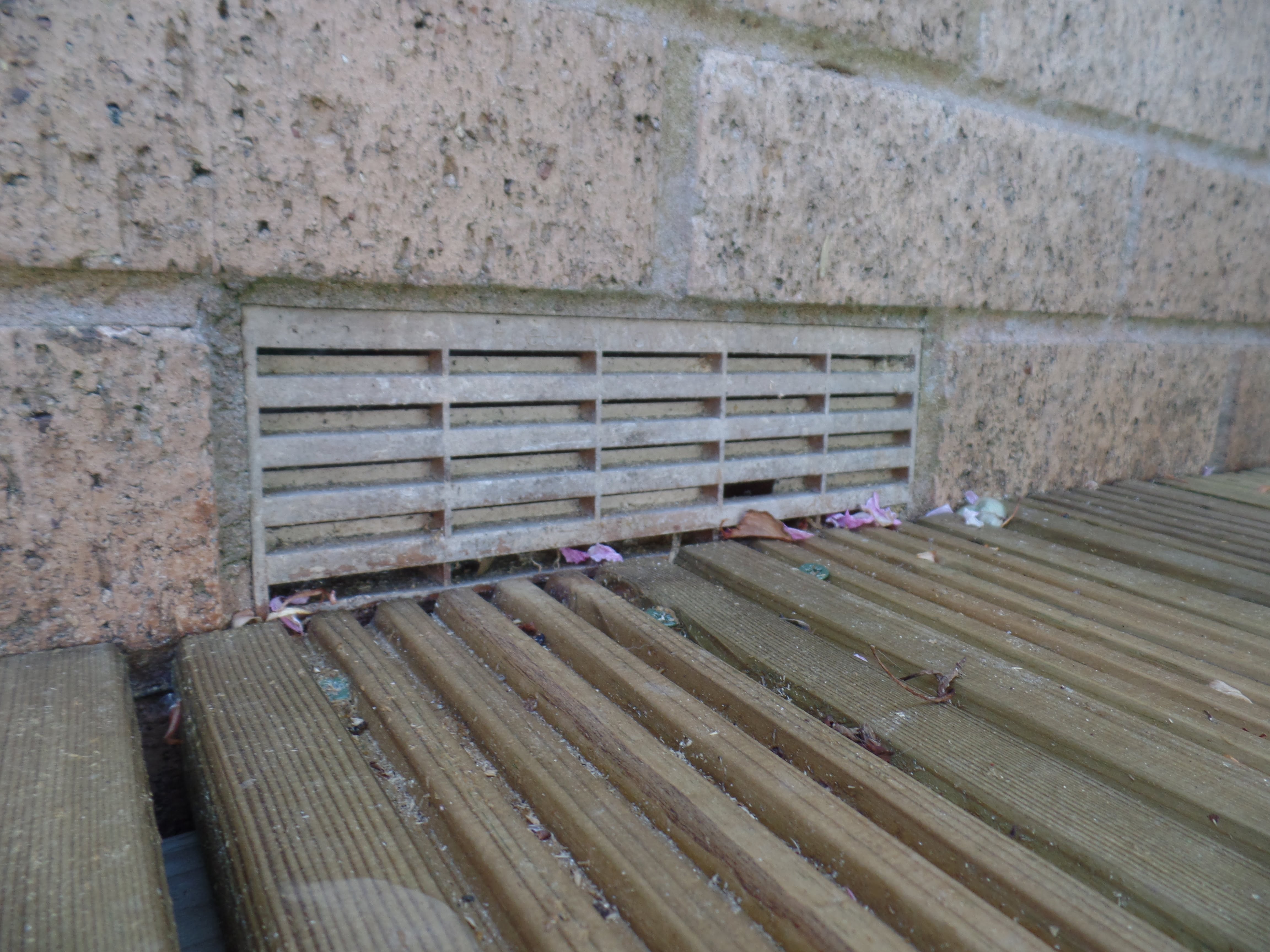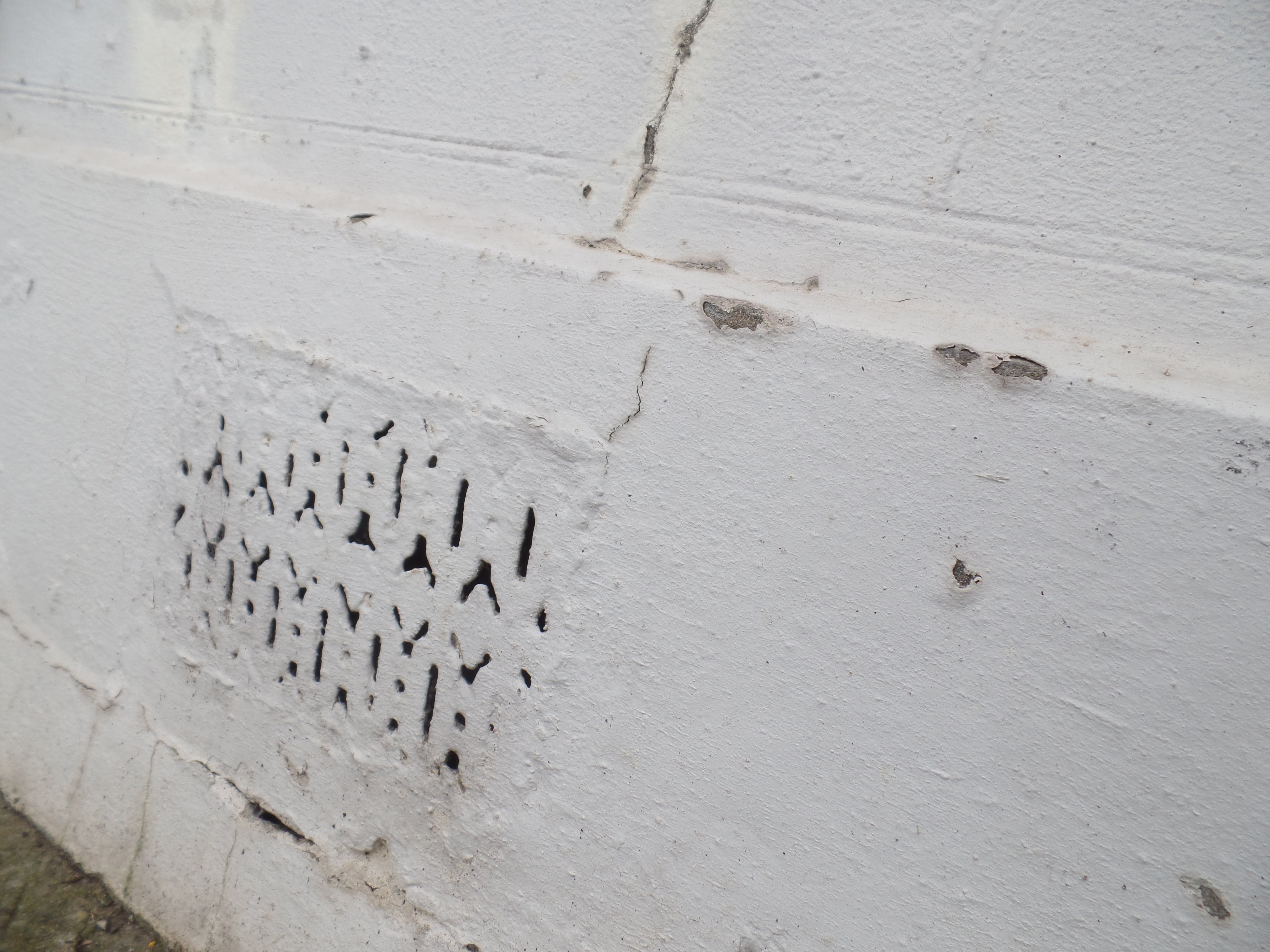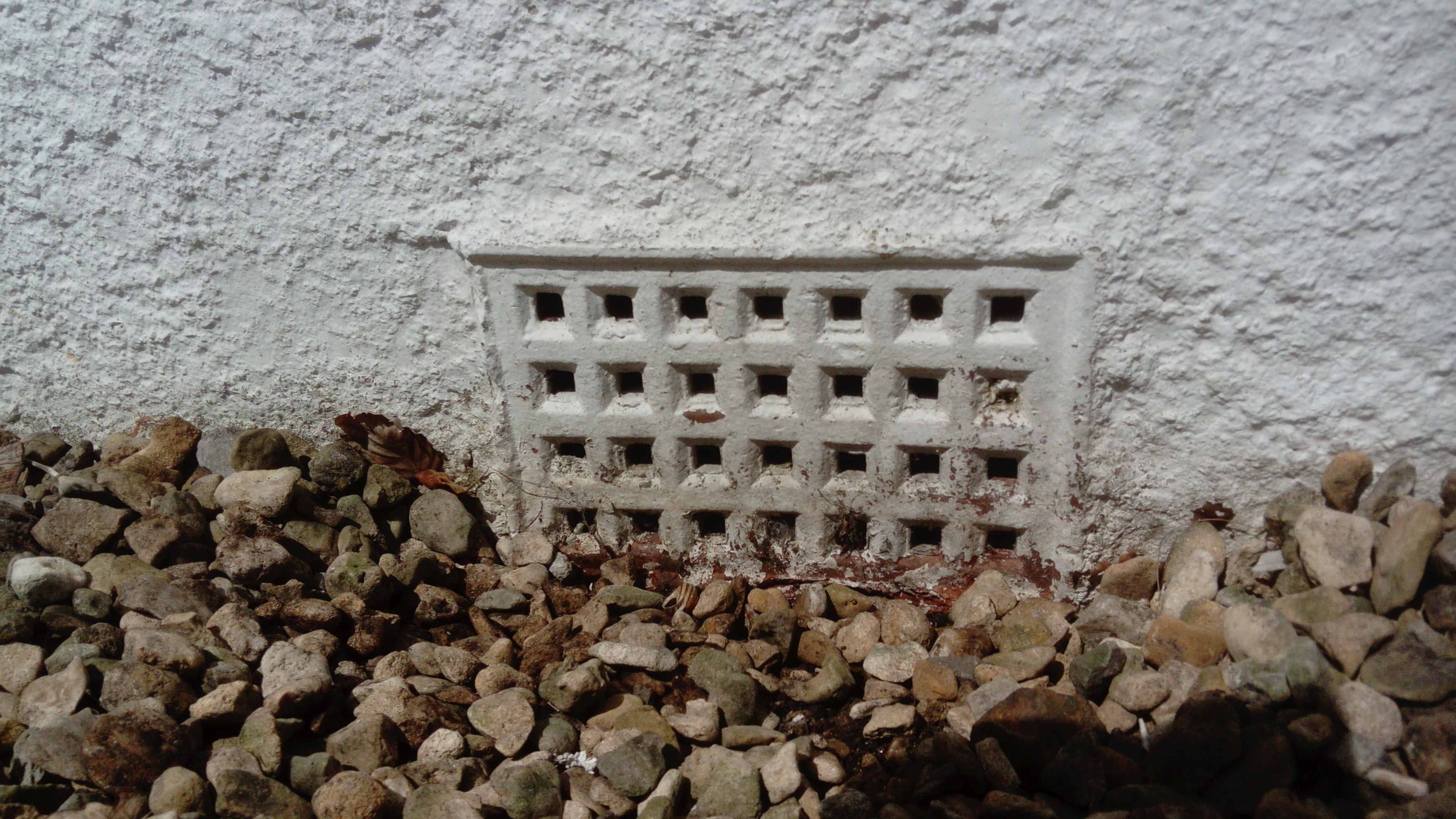Airbricks through the Ages

SAMSUNG CAMERA PICTURES
Airbricks through the Ages
Older properties with suspended timber floors are prone to dampness in the space beneath, in the sub floor void. This may be caused by condensation or by rising damp or by penetrating damp. It is likely to cause rot, decay and timber beetle infestation (woodworm or worse).
Airbricks are essential to permitting air to flow beneath the floors. This reduces the condensationin the sub floor void. It removes excess moisture and helps the timbers to remain drier – hopefully dry enough to prevent that rot, decay and timber beetle infestation. These seemingly insignificant objects are often overlooked but their role isvital in keeping the ground floor timbers floors in acceptable condition.
What may be the consequences?
Sadly,landscaping gardens is one of the major causes of blocking airbricks. For example, the grilles may be covered by wall plates for decking or in some cases simply heaped with gravel. Building pathology is not a widely appreciated topic in all trades! Recently, we visited a property in Bedminster on behalf of an insurer where decking had been installed to the rear and caused a significant dry rot outbreak. Unfortunately for the policy holder, this would not be an insurable peril and she will have to fund the cost of treatment and repair as well as replacing most of her stripped wooden floor.
Victorian Airbricks
The Victorians used a cast iron grille with vertical vents, as shown on the below diagram. These have rarely been cleaned and over the years become blocked by spiders and general detritus. Often they have been painted so many times that the width of the grilles is reduced. This in turn will impair their ability to allow air to pass under the building. Hence it is important to scrape off the excess paint (wearing gloves as the paint was often lead containing) and repaint them. Pipe-cleaners are useful to help clear the slots.

SAMSUNG CAMERA PICTURES
In the 1930’s
At this time, the metal grilles were often constructed in a grid pattern as shown below. Again, they suffer from the same issues as mentioned above; they require clearing out and generally maintaining. If they rust they will expand, which can cause localised cracking to the surrounding brickwork – the force is sufficient to push this out of alignment.
On a building survey in St George recently, we inspected a house that appeared to be completely Victorian, however the airbricks were clearly 1930’s and were not replacements. We followed the trail and discovered that the house was rebuilt the late 1940’s,having been destroyed by bombing in the war. The smallest clues can help identify issues such as this!

From the 1970’s
During the 1950’s and 1960’s, solid floors (of poured concrete) were common hence negating the need for airbrick ventilation. After this, suspended timber floors once again became popular. The accompanying airbricks consisted of plastic louvre-type vents with a slight slope to the fins. This helped reduce penetrating dampness problems and restricted the opportunity for rodents to enter the sub floors. Again, these vents do require clearing out.
From the 1990’s
Even if the floors are of the block and beam construction common in the 1990’s and noughties, air vents are fitted to help ventilate the space. They can also form part of radon control measures so again should not be blocked or removed.
Sometimes larger square vents are seen on the front elevations of houses whichare above the internal floor level. These are usually installed to help increase air flow for internal combustion appliances such as back boilers or gas fires – they should not be confused with airbricks that are normally brick sized, used to ventilate sub floors.
The future of Airbricks
The insertion of a solar powered fan would greatly assist in ventilating buildings. This would be beneficial in reducing the many problems associated with damp sub-floors over the last 150 years or so. Such fans are available in other countries but are not found in the UK. They are inexpensiveto produce and would offer significant savings on reactive maintenance as well as preventing decay in sub floors.
